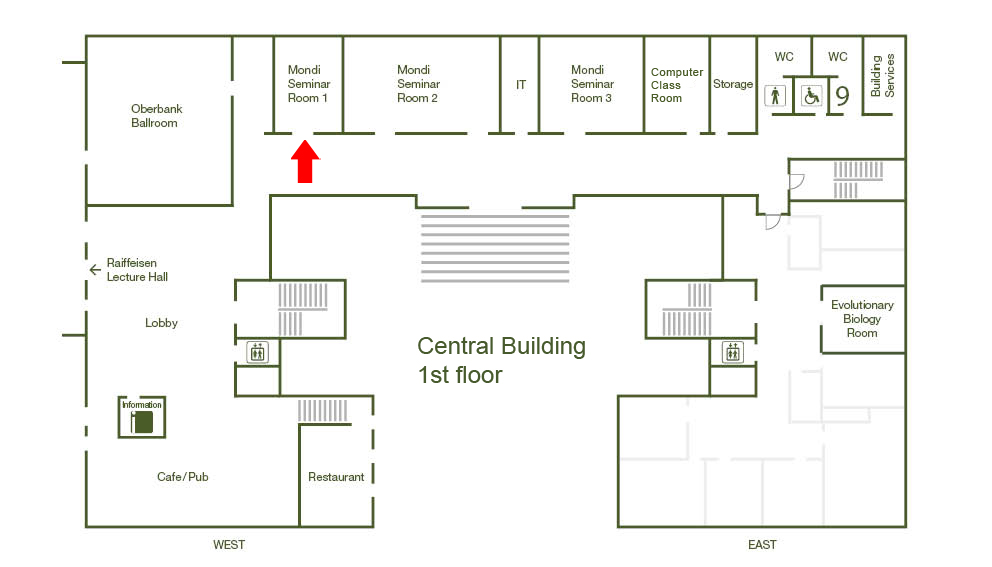Self-organization and molecular transport by bacterial protein systems
Date
Thursday, November 20, 2025 13:00 - 14:00
Speaker
Beatrice Ramm (Friedrich Miescher Laboratory of the Max Planck Society)
Location
Central Bldg / O1 / Mondi 2a (I01.O1.008)
Series
Seminar/Talk
Host
Martin Loose
Contact

A hallmark of living systems is self-organized pattern formation: the partitioning of molecules and
cells into distinct spatial domains with different functions. But self-organization phenomena
exhibit complex behavior that cannot be predicted from their components, complicating their
investigation. To overcome this challenge, our research uses bottom-up and mammalian synthetic
biology approaches to quantitatively describe the molecular mechanisms and emergent properties
of self-organizing systems. In this talk, I will describe with two examples how we study the pattern
formation of bacterial protein systems using in vitro reconstitution techniques.
The first example is the Escherichia coli MinDE system, which positions the cell division site and
has become a model for pattern formation because it self-organizes into traveling surface waves
and other patterns when reconstituted. Using this technique, we discovered that MinDE can
transport unrelated cargo molecules via a nonspecific mechanism termed diffusiophoresis.
The second example consists of a phosphatidylinositol (PI) lipid kinase, MavQ, and a phosphatase,
SidP, two effector proteins of the intracellular pathogenic bacterium Legionella pneumophila, that
have been shown to remodel ER membranes of the eukaryotic host cell, while exhibiting dynamics.
We could show that MavQ and SidP also self-organize into dynamic patterns that enrich their
substrate lipids in vitro. I will discuss how MavQ/SidP self-organization differs from established
systems such as E. coli MinDE, suggesting it may be a promising new paradigm for the study of
protein pattern formation.